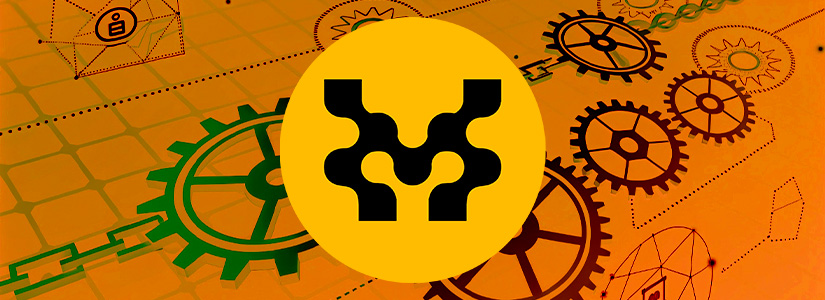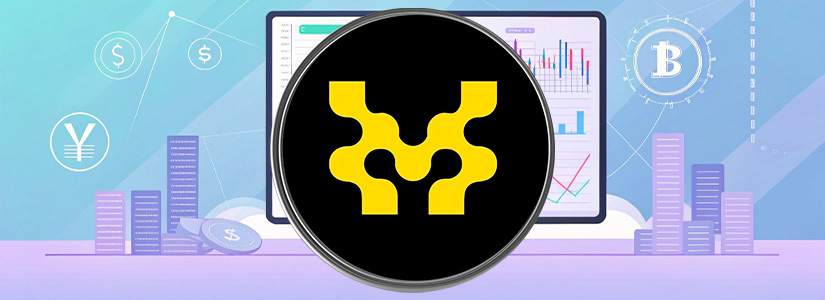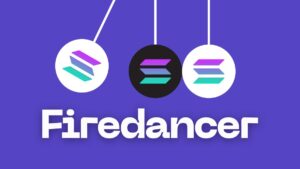Movement Network redefines blockchain scalability and security by merging Ethereum’s decentralization with the high-performance MoveVM. Its modular architecture enables app-specific chains, cross-chain interoperability, and institutional-grade compliance tools. The MOVE token fuels governance, staking, and ecosystem growth, positioning Movement as a versatile platform for DeFi, NFTs, and real-world asset tokenization.
What is the Movement Network?

Movement Network is a modular blockchain ecosystem combining Ethereum’s security with MoveVM, a high-performance virtual machine derived from Meta’s Diem. Its architecture supports parallel transaction processing, enabling near-instant finality and high throughput, while its modular design allows developers to build app-specific chains, rollups, or sovereign networks tailored to distinct use cases.
Interoperability & Cross-Chain Integration
The platform natively bridges ecosystems like Ethereum, Cosmos, and Solana through its EVM-compatible MoveVM, enabling Solidity and Move-based dApps to coexist. Its cross-chain messaging protocol facilitates asset and data transfers, while Fractal Scaling dynamically allocates computational resources to prevent congestion, ensuring consistent performance.
MOVE underpins network operations, serving as a governance token, staking asset, and medium for gas fee payments via gas abstraction. Holders participate in consensus, propose upgrades, and earn rewards, while developers receive grants for building on the network. The token also powers partnerships, such as WLFI’s decentralized treasury diversification strategy.
Security & Developer Tools
Movement’s resource-oriented programming model eliminates vulnerabilities like reentrancy attacks, while its MEV-resistant design protects users from predatory trading. Developers access tools like the Movement SDK for rapid dApp deployment, pre-audited smart contract templates, and on-chain privacy modules for compliant institutional solutions.
The network supports diverse applications, including tokenized real-world assets, gaming ecosystems, and decentralized exchanges. Partnerships with projects across DeFi, NFTs, and enterprise blockchain highlight its versatility. Movement’s focus on compliance and institutional-grade infrastructure positions it as a hub for regulated DeFi and cross-border financial solutions.
By merging Ethereum’s decentralization with Move’s security and scalability, Movement aims to become a foundational layer for Web3, prioritizing seamless interoperability, developer flexibility, and real-world adoption across industries.
How Does the Movement Network Work?

Movement Network employs a sharded, parallelized architecture where transactions are processed across multiple chains (shards) simultaneously, eliminating bottlenecks seen in linear blockchains.
Each shard operates independently using the MoveVM, which validates smart contracts in isolation, ensuring resource efficiency and preventing cross-shard conflicts. This design enables horizontal scaling, allowing the network to add shards dynamically as demand increases, maintaining low latency and high throughput.
Consensus Mechanism & Validator Roles
The network uses a hybrid consensus model combining Proof-of-Stake (PoS) with BFT (Byzantine Fault Tolerance). Validators stake MOVE tokens to participate in block production and finality, with rewards distributed based on uptime and correctness.
A decentralized validator set is divided into committees responsible for specific shards, rotating periodically to prevent centralization. Disputes are resolved through fraud proofs, ensuring malicious actors are slashed, while honest validators secure the network.
Gas Abstraction & Cross-Chain Communication
Movement abstracts gas fees by allowing users to pay transaction costs in any supported asset (e.g., stablecoins, ETH) through smart contract wrappers, reducing dependency on native tokens.
Cross-chain interactions are facilitated via a universal messaging hub that translates data between MoveVM and external chains like Ethereum or Solana. This hub employs light clients and zk-SNARKs to verify transactions trustlessly, enabling seamless asset transfers and interoperable dApp logic without centralized bridges.
By integrating parallel execution, decentralized validator incentives, and gas-agnostic transactions, Movement optimizes scalability while preserving security. Its sharded MoveVM environment and interoperable infrastructure create a unified framework for developers to deploy dApps that operate fluidly across ecosystems, balancing performance with decentralization.
What is the MOVE token?

The MOVE token is the native cryptocurrency of Movement Network, functioning as the primary medium for governance, network participation, and value exchange. Holders govern protocol upgrades, treasury allocations, and ecosystem parameters through decentralized voting, while staking MOVE secures the network via Proof-of-Stake consensus, earning rewards for validators and delegators.
Economic Model & Incentives
MOVE’s deflationary mechanics include periodic token burns tied to gas fees and ecosystem activity, balancing supply dynamics. It incentivizes developers through grants and liquidity mining programs, fostering dApp innovation. Institutions leverage MOVE for collateralized services, such as WLFI’s treasury diversification strategy, which uses the token for yield-bearing DeFi protocols.
As the backbone of Movement’s ecosystem, MOVE bridges decentralized governance with real-world financial applications, enabling seamless interaction across DeFi, NFTs, and institutional blockchain solutions while maintaining scarcity and utility-driven value.
Is the MOVE Token a Good Investment?
The MOVE token’s viability as an investment depends on Movement Network’s growth trajectory and real-world adoption. Its collaboration with WLFI highlights institutional use cases, such as decentralized treasury management, where MOVE facilitates yield-generating strategies.
The token’s value is tied to Movement’s scalable infrastructure, cross-chain interoperability, and expanding ecosystem spanning DeFi, NFTs, and enterprise solutions. While deflationary mechanisms and utility in governance may drive demand, risks like market volatility and regulatory uncertainty persist.
MOVE’s long-term potential hinges on the network’s ability to attract developers and partners, leveraging its MoveVM technology to solve industry-wide challenges in security and scalability.
What are the Benefits of the Movement Network?
Movement Network eliminates scalability trilemma trade-offs by combining Ethereum’s security with MoveVM’s parallel processing, enabling thousands of transactions per second. Its modular architecture allows developers to deploy lightweight, application-specific blockchains with customizable consensus rules, reducing bloat and optimizing resource allocation for niche use cases.
Institutional-Grade Compliance Tools
The network integrates built-in privacy-preserving modules and regulatory-compliant smart contract templates, catering to enterprises and institutions requiring audit trails or KYC/AML integration. These tools enable the seamless adoption of tokenized assets, cross-border payments, and regulated DeFi products without sacrificing decentralization.
By prioritizing both scalability and compliance, Movement bridges the gap between decentralized innovation and real-world financial systems. Its adaptable infrastructure supports everything from high-frequency trading to privacy-focused NFTs, making it a versatile foundation for next-generation blockchain applications.
Conclusion
By solving scalability, security, and compliance challenges, Movement Network bridges decentralized innovation with global financial systems. Its adaptable infrastructure, powered by MOVE’s utility, supports cross-chain dApps and institutional adoption. As a foundational Web3 layer, Movement is poised to drive mainstream blockchain integration across industries, redefining trustless, high-performance digital ecosystems.










